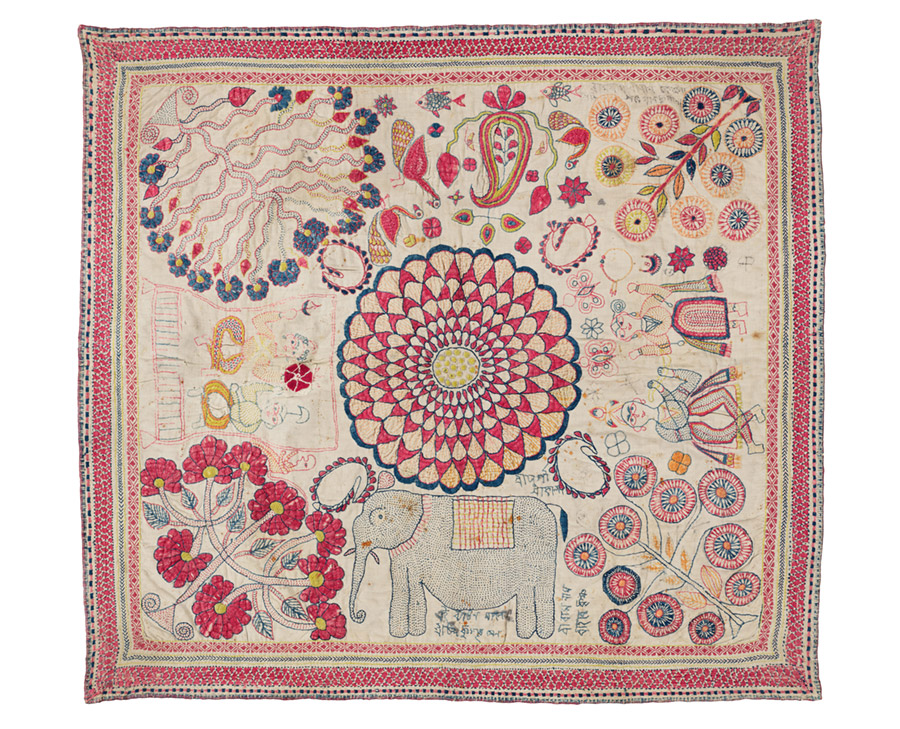Embroidered Dreams: A Personal Appreciation of Bengali Kanthas
- click on the image to enlarge | click on the Expand icon upper left to enlarge further
click Esc to close and return to this page
PLATE 26
Twentieth century
Cotton plain weave; hand-sewn and embroidered with cotton thread
27 in. x 27 in. (68.6 cm x 68.6 cm)
Mingei International Museum, Gift of Stephen Huyler, 2006-81-407
This baytan kantha has a large central mandala with a traditional petaled form surrounded by boteh, or paisley motifs, and four tree of life forms. Between them are images of an elephant, a couple, perhaps Krishna and Radha, peacocks, and a couple seated on a bed. Embroidered in red, blue, orange, and green, it offers a lively and colorful example. The inscription cites the name of the owner of the kantha, Chandra Kumar Sen. Also referenced are the gods and goddesses Durga, Kali, Rama, and Krishna, reflecting the maker’s devotion to particular deities.
Notes:
1. ei bandhaner malikan shri chandra kumar sen.
Comments: The writing not clearly legible but the meaning is the owner of this item is Chandra Kumar Sen. The use of the word bandhan for kantha, is current in the region of Navadip/Krishnanagar of West Bengal. I am indebted to Ms. Maitreyi Roychoudhury for this information. Bandham is of course the adaptation of Hindi bandhni applied to fie-dice material also handled commercially by textile merchants.
2. ba Durga
ba Kali
3. ba Ram Ram (Name of Rama)
ba Hare Krishna
4. Can only recognize Ram Ram; rest unclear.
Except for the first inscription giving the name of the owner, the others have no relevance except denoting the maker’s devotion to various deities.
